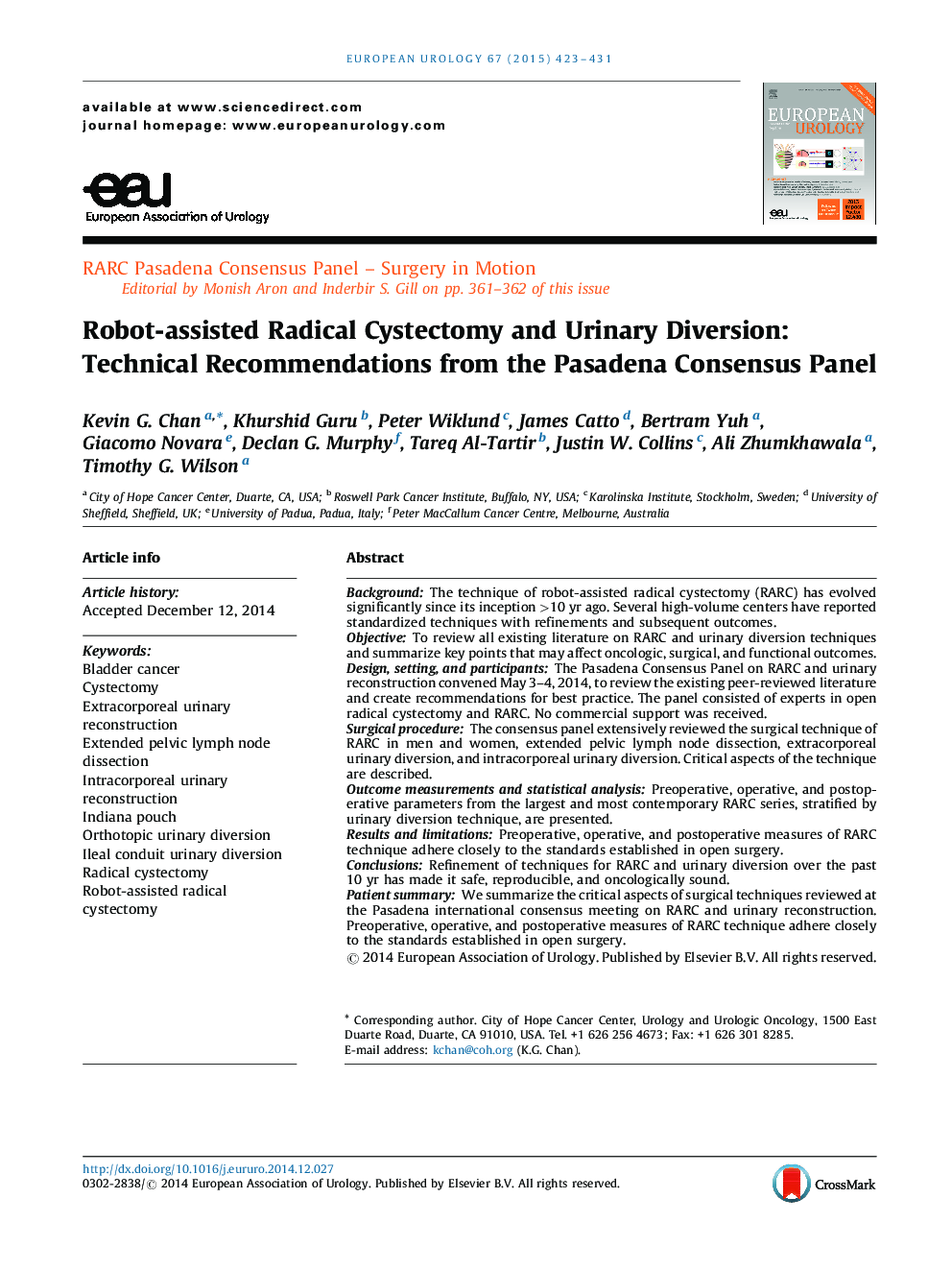| Article ID | Journal | Published Year | Pages | File Type |
|---|---|---|---|---|
| 6176687 | European Urology | 2015 | 9 Pages |
BackgroundThe technique of robot-assisted radical cystectomy (RARC) has evolved significantly since its inception >10 yr ago. Several high-volume centers have reported standardized techniques with refinements and subsequent outcomes.ObjectiveTo review all existing literature on RARC and urinary diversion techniques and summarize key points that may affect oncologic, surgical, and functional outcomes.Design, setting, and participantsThe Pasadena Consensus Panel on RARC and urinary reconstruction convened May 3-4, 2014, to review the existing peer-reviewed literature and create recommendations for best practice. The panel consisted of experts in open radical cystectomy and RARC. No commercial support was received.Surgical procedureThe consensus panel extensively reviewed the surgical technique of RARC in men and women, extended pelvic lymph node dissection, extracorporeal urinary diversion, and intracorporeal urinary diversion. Critical aspects of the technique are described.Outcome measurements and statistical analysisPreoperative, operative, and postoperative parameters from the largest and most contemporary RARC series, stratified by urinary diversion technique, are presented.Results and limitationsPreoperative, operative, and postoperative measures of RARC technique adhere closely to the standards established in open surgery.ConclusionsRefinement of techniques for RARC and urinary diversion over the past 10 yr has made it safe, reproducible, and oncologically sound.Patient summaryWe summarize the critical aspects of surgical techniques reviewed at the Pasadena international consensus meeting on RARC and urinary reconstruction. Preoperative, operative, and postoperative measures of RARC technique adhere closely to the standards established in open surgery.
